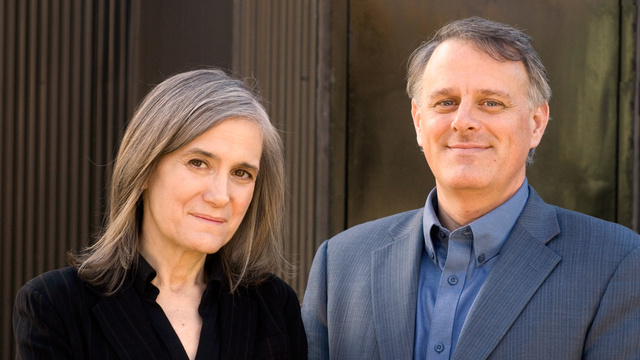
Topics
By Amy Goodman & Denis Moynihan
The aspen grove on Kebler Pass in Colorado is one of the largest organisms in the world. Thousands of aspen share the same, interconnected root system. Last weekend, I snowmobiled over the pass, 10,000 feet above sea level, between the towns of Paonia and Crested Butte. I was racing through Colorado to help community radio stations raise funds, squeezing in nine benefits in two days. The program director of public radio station KVNF in Paonia dropped us at the trailhead, where the program director of KBUT public radio in Crested Butte and a crew of station DJs picked us up on snowmobiles to whisk us 30 miles over the pass.
Now that the Republicans have taken over the House of Representatives, one of their first acts was to “zero out” current funding for the Corporation for Public Broadcasting (CPB). Furthermore, Rep. Doug Lamborn from Colorado Springs has offered a bill to permanently strip CPB funding. Lamborn told NPR, “We live in a day of 150 cable channels—99 percent of Americans own a TV, we get Internet on our cell phones, we are in a day and age when we no longer need to subsidize broadcasting.”
But public broadcasting was established precisely because of the dangers of the commercial media. When we are discussing war, we need a media not brought to us by weapons manufacturers. When discussing health care reform, we need a media not sponsored by insurance companies or Big Pharma.
In Senate testimony last week, Secretary of State Hillary Clinton fiercely criticized the commercial media, saying: “We are in an information war, and we are losing that war. … Viewership of Al-Jazeera is going up in the United States because it’s real news. You may not agree with it, but you feel like you’re getting real news around the clock instead of a million commercials and, you know, arguments between talking heads and the kind of stuff that we do on our news.” Clinton was asking for more funding for the overseas propaganda organs of the U.S. government, like Voice of America, Radio Marti and the Arabic-language TV channel that is produced in Virginia for broadcast to the Middle East, Al-Hurra. That arm of the State Department is slated to receive $769 million, almost twice the funding of the CPB. The U.S. military’s media operation has an annual budget exceeding $150 million and distributes entertainment programming to overseas bases, and propagandistic content on its full-time U.S. television platform, The Pentagon Channel.
While Clinton’s description of the failed U.S. commercial media is correct, her prescription is all wrong. We need more genuine news and less propaganda. Media studies professor Robert McChesney echoed that, telling me: “The smart thing to do is to take most of that $750 million, add it onto what’s being spent currently in the United States, and create a really dynamic, strong, competitive public and community broadcasting system that treats the U.S. government the same way it treats other governments, the same standard of journalism, then broadcast that to the world, make that fully accessible to the world. And I think that would show the United States at its very best.”
In rural Colorado, as in rural regions across the country, and on Native American reservations, public radio stations rely on CPB grants for anywhere from 25 percent to 50 percent of their operating budgets. At the standing-room-only benefit in Paonia, KVNF General Manager Sally Kane explained the crisis: “The Communications Act of 1934 set aside a small spectrum of the airwaves to serve the public interest and to be free of commercial influence. … Once again, it’s cutting services to those who need it most, while protecting those groups who can afford a posse of lobbyists to defend their interests. I refuse to imagine my region without my community radio station.”
The response was the same, from Idaho Springs, to Carbondale, Paonia, via snowmobile to Crested Butte, then over Monarch Pass to Salida (at the western edge of Lamborn’s district), to Telluride, then Rico, and on to Durango. In the packed town halls, auditoriums and theaters, the passion among the local residents for their stations demonstrates that, like the aspen groves of the Rocky Mountains, these small stations are resilient, strong and deeply rooted in their communities. Their funding is an investment that should be preserved.
Amy Goodman is the host of “Democracy Now!,” an independent, daily global TV/radio news hour airing on more than 950 stations in the United States and around the world. She is the author of “Breaking the Sound Barrier,” recently released in paperback and now a New York Times best-seller.
© 2011 Amy Goodman & Denis Moynihan

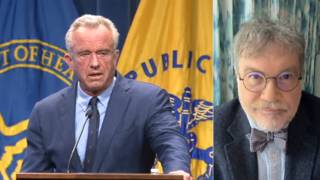

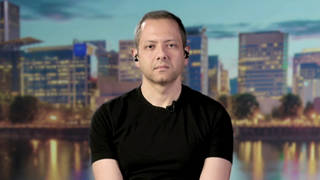
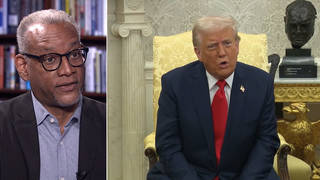

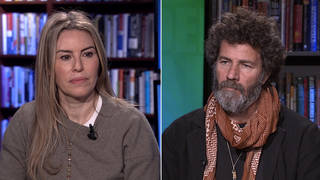


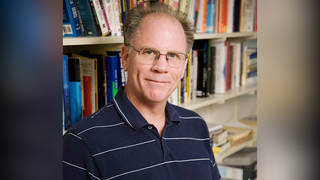

Media Options